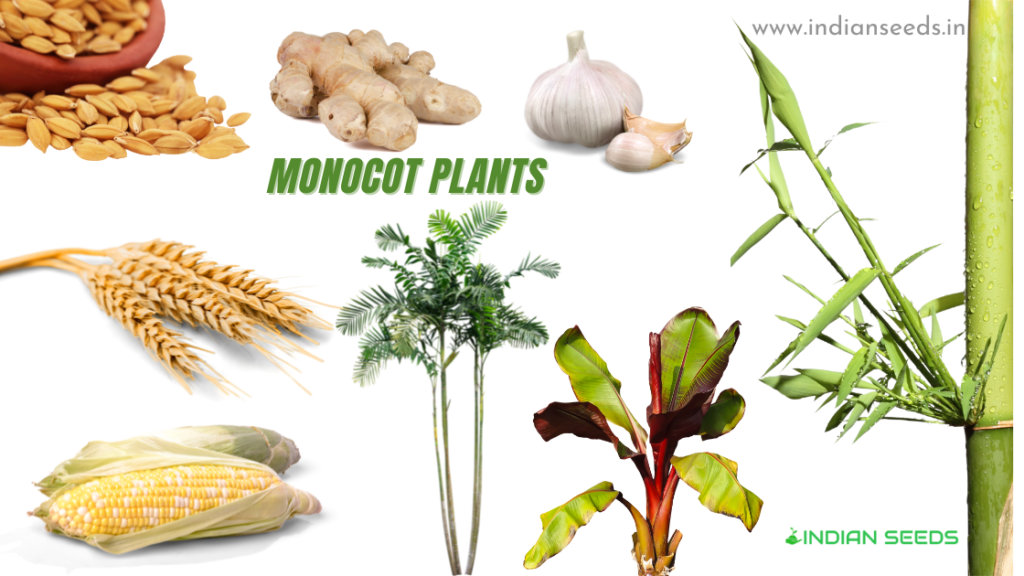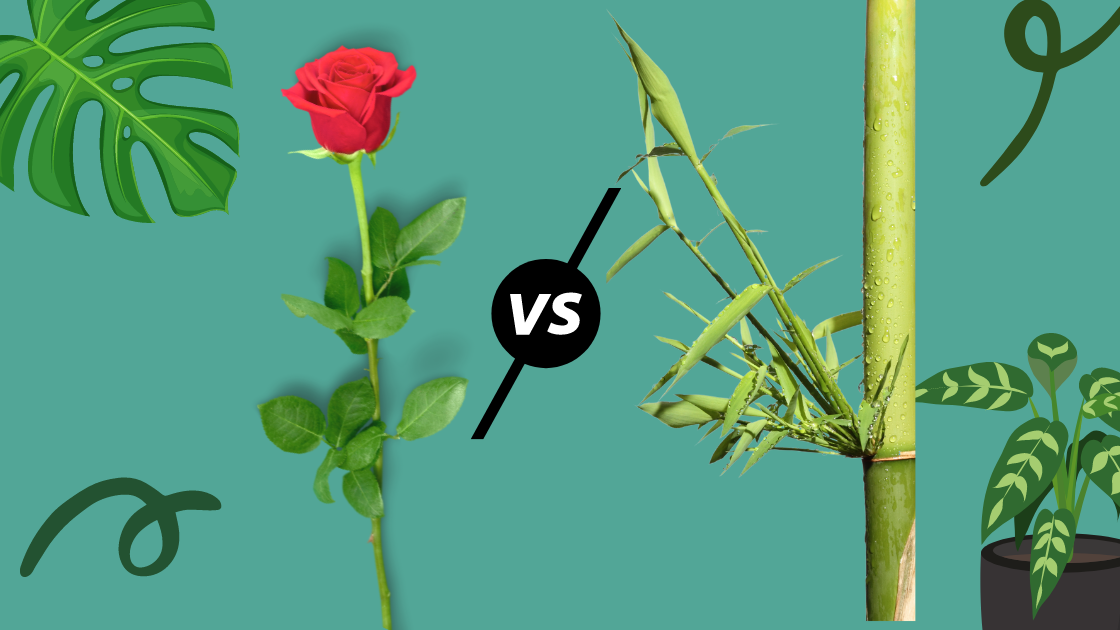Dicot vs Monocot Seeds
Dicotyledons commonly referred as Dicots and Monocotyledons commonly referred as Monocots
Table of Contents:
- Definition of Monocot Seed
- Examples of Monocot Seed
- Definition of Dicot Seed
- Examples of Dicot Seed
- Structure of Monocot and Dicot Seed
- Monocot Seed vs Dicot Seed (10 Key Differences)
- FAQs (Frequently Asked Questions)
What is Monocot Seed?
Inside the seed coat of monocots, there will be only one seed leaf or embryonic leaf cotyledon. Because the endosperm that feed the new plant is not present inside the seed leaf, it is usually merely a thin leaf.

Examples of Monocot Seed
Rice(paddy), wheat, maize, bamboo, palm, banana, ginger, onion, garlic, lilies, daffodils, iris, tulips are examples of Monocot seeds.

- The most essential traits that allow monocots and dicots to be distinguished are the seed structure and the number of cotyledons present in the seed.
- Most monocot seed pods are trimerous (composed of three parts), as the carpel engaged in fertilization is also composed of three parts.
- Due to the existence of a big endosperm, monocot seeds are usually larger. To support the embryo, the endosperm stores a huge amount of food.
- Because of the presence of endosperm, monocot seeds are also known as Albuminous Seeds.
- The seeds vary in shape and size, but monocot seeds are less symmetrical than dicot seeds due to the existence of a single cotyledon. Monocot seeds come in a variety of forms, including triangular, elliptic, ovate, and egg-shaped.
- Because ovules develop into seeds after fertilization, the shape of the ovule has an impact on the seed’s final shape.
- The embryo, which is covered on the outside by a covering and provided with food and nutrients by the endosperm, is the most vital portion of a seed.
- Monocots are classified as a monophyletic group since their evolutionary history can be traced back to a single common ancestor.
What is Dicot Seed?
Dicot seeds (also known as cotyledon seeds) are seeds with two embryonic leaves and cotyledons. They are one of two classes into which all blooming plants have been classified.

Examples of Dicot Seed
Guava seeds, Peas, Sunflower seeds, Bitter gourd seeds, Castor seeds, Mango seeds, Neem Seeds, Night Jasmine seeds, Papaya seeds and, Tamarind seeds.

- Dicot seeds comprise a single embryo surrounded by two cotyledons and an embryo axis. All angiosperms or blooming plants were formerly classified as dicots.
- Seed pods in dicot plants vary in size, shape, and quantity because dicot seed pods can have any number of chambers.
- Dicot seed pods often contain more seeds than monocot seed pods.
The seeds of most dicots are - Symmetrical and can be separated into two parts. In dicots, the endosperm is frequently diminished, and in rare cases, totally absent.
- The shape of the seed differs between species and can be used to distinguish between them. For example, peas and beans can be distinguished by the shape of their seeds.
- Dicot seeds come in a variety of sizes, as the group includes a variety of plants ranging from shrubs to herbs to woody trees.
- Dicot seeds can be distinguished further by the absence of extra sheaths surrounding the embryo.
- Dicots are not a monophyletic group because their plants do not have a common ancestor.
Difference Between Monocots and Dicots Seeds:
|
Monocot Seeds |
Dicot Seeds |
|
1. Monocots have single cotyledon |
1. Dicots have two cotyledons |
|
2. Leaves of monocots have parallel veins |
2. Leaves of dicot have branched veins |
|
3. Parts of the flowers in monocot are in threes |
3. Parts of the flower in the dicot are more than three. |
|
4. Vascular bundles are throughout the stem’s ground tissue |
4. Vascular bundles are arranged in a ring |
|
5. Monocots have one pore |
5. Dicots have 3 pores |
|
6. Fibrous root system |
6. Taproot system |
|
7. Thin and small, lacks food materials |
7. Fleshy and stores food |
|
8. Endosperm is present and stores food |
8. The endosperm is absent and lacks food |
|
9. Secondary cambium is absent |
9. Secondary cambium is present |
|
10. Monocot leaves have parallel venation |
10. Dicot leaves have reticulate venation |
FAQs (Frequently Asked Questions)
Is it possible for dicot seeds to store food materials?
Yes, dicot seeds have the ability to store food.
What is the composition of the Seed Coat?
The seed coat is made up of two layers: testa on the outside and tegmen on the inside.
What exactly is Scutellum?
Monocot seed embryos feature a single big cotyledon known as the scutellum.
How can we identify monocot seed and dicot seed after germination?
A monocot seed generates a single leaf when it germinates. Like the adult leaf, it is usually long and slender. A monocot has only one seed leaf, even if it has a somewhat circular form.
A dicot generates two seed leaves when it germinates. They are usually thicker than real leaves because they contain sustenance for the developing plant. The earliest genuine leaves have a distinctive form.
Are pine trees monocots or dicots?
Pine trees are conifers, not monocots or dicots. These two classifications are only regarded to include flowering plants. This is the same as asking if a chicken is a monocot or a dicot; it is neither.
What supports palm trees if monocots don't contain wood?
In order to keep upright, palms rely on overlapping leaf bases, thicker larger cells, and prop roots. Cycads and tree ferns both adopt this approach. We aim to create a special exhibit on tree architecture shortly that will go into this in greater depth.


















